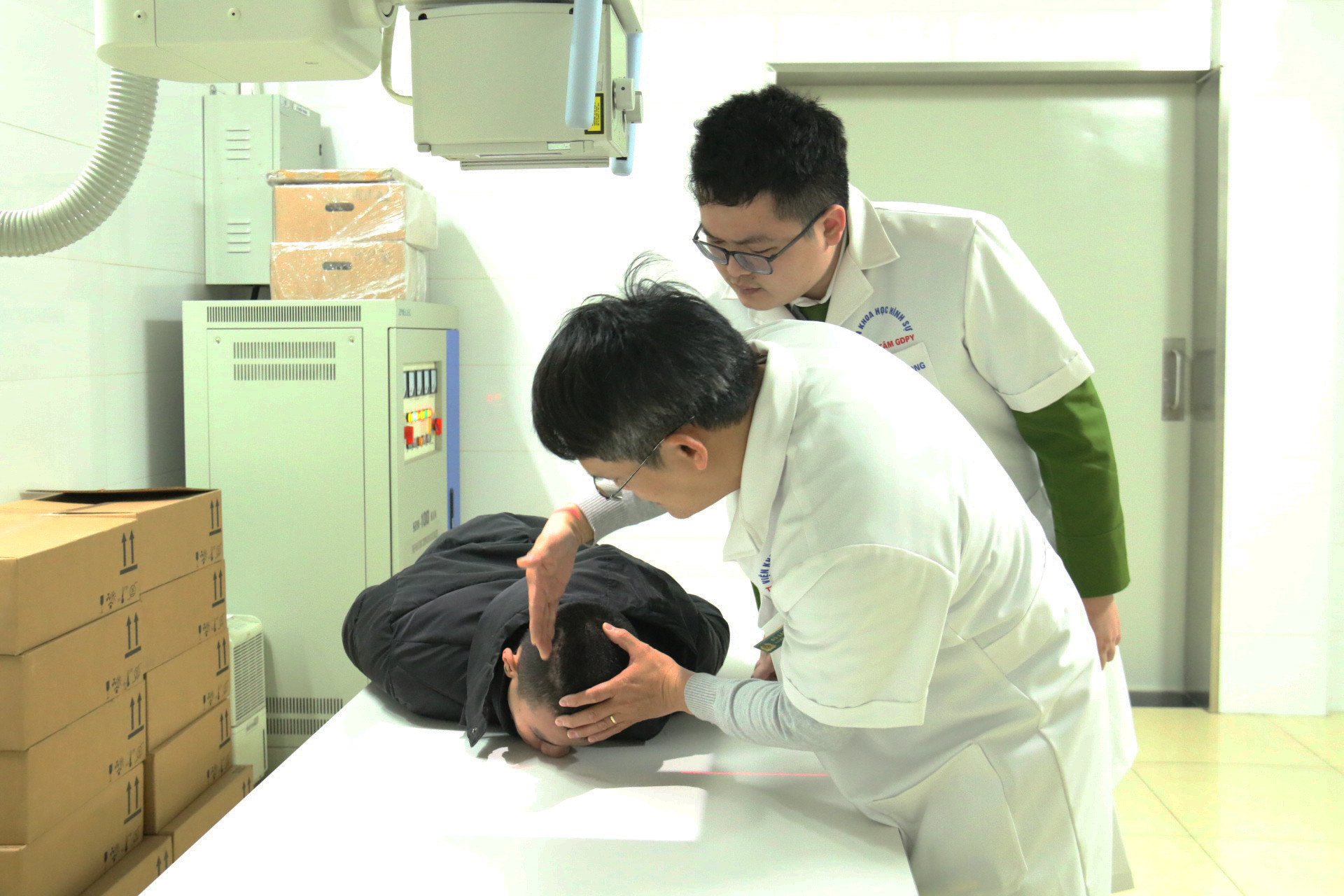
Hieu said the case that he and his teammates remember the most was the massacre in Uong Bi, Quang Ninh in 2016, when he was a captain.
The members of the team of the Institute of Criminal Sciences were the first persons present on the site. The image of the four persons, including a grandmother and three children lying on the kitchen floor with many stab wounds on their bodies, made the whole team understand that this was a serious case.
“We worked nine hours without any break, from noon to 2am the next day. The team of forensic examiners comprised four members,” Hieu recalled.
“After we finished the examination, an officer came and said: 'Please go have breakfast. One officer is waiting',” Hieu said.
“The person waiting for us turned out to be Deputy Minister of Public Security Le Quy Vuong, who came to the scene to learn and give us instructions on the investigation”.
“During the breakfast, he praised us 'Well done'. However, the time after the breakfast was a tough time for us. The examining team was queried with rapid-fire questions. If we had not had studied the case carefully, we would not have been able to answer,” Hieu recalled.
Later, Major General Ho Sy Tien, head of the Criminal Police Department, who is called the ‘nemesis’ of criminals, came and joined the discussions about investigation.
“At that time, I was assigned to lead the forensic team to investigate the case,” Hieu said.
At the discussion, Vuong asked Tien to give initial comments about the case. Tien said “there must be two or more culprits”.
However, when Vuong told the forensic team to show its opinions about the case after examination, Hieu gave a different answer.
“I think the crime could be committed by one person, but he might do this at two different moments,” Hieu said.
The answer of the forensic team gave the Major General a start.
When Vuong asked the examiners to show proof, Hieu said that the proof was the time of death, which could be found after considering the food digestion in the victims' stomachs.
The volume of food in the stomachs of two children showed that the victims had the meal 3-4 hours before the moment of death.
Meanwhile, some witnesses affirmed that their last meal was at 7-8pm. This meant that the time of death was at 11pm.
As for the grandmother and her cousin’s child, the time of death was 2-3am. Thus, the murders could have been done twice, and done by one person.
After hearing the explanation, Vuong agreed with the conclusion ‘there is at least one culprit’ made by the forensic team. He said: “I believe forensic examiners because they have scientific proof."
While chasing the suspect, the investigation agency was allowed to search the house to find the weapons which could be used for the murders.
So, the next task the forensic team had to do was finding out if the knife found by investigators was the weapon used in the crime.
The team examined several knives, but believed that they were not related to the wounds. Finally, investigators gave another knife hidden under the roof, and forensic examiners confirmed that the knife, which still had the victims’ blood, was the weapon that killed the victims.
Later, the killer was found, and his confessions all fit the forensic examiners’ findings.
Relating the story, Hieu affirmed the important role of forensic examination. “After surgeries, examiners must make a conclusion about the reasons behind death. They must not say the causes of the death are unknown."
However, there were many cases when examiners got stuck.
One of the cases occurred in HaTinh province, and central examiners were asked to help after local examiners failed to find out the causes of the death.
After many hours of studying, the central examiners could not find the reasons.
Finally, they found a small bruise that could not be seen with naked eyes, and considering all possible diseases which could cause the death, they concluded that the victim died because of certain reflexes.
“If there is a sudden pressure on Nerve No 10, the heart will stop beating and people will die of heart failure,” he said.
Nguyen Thao